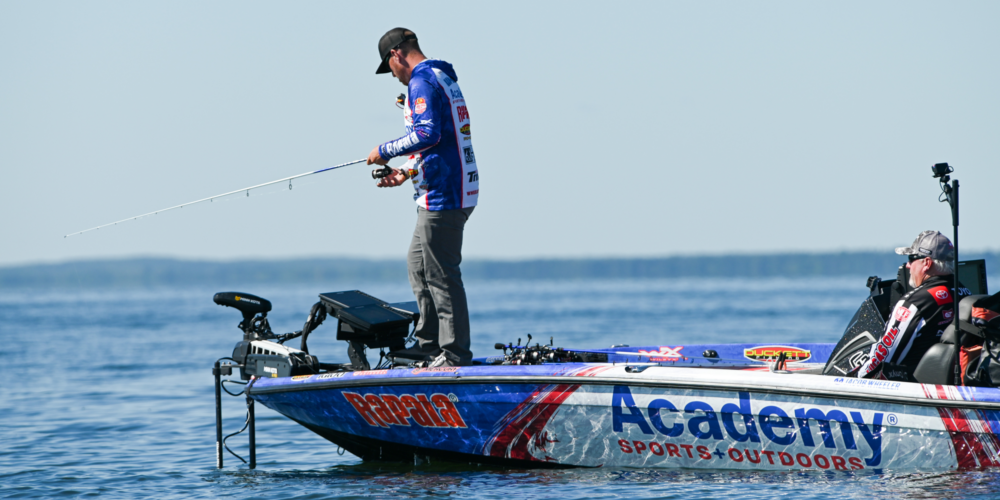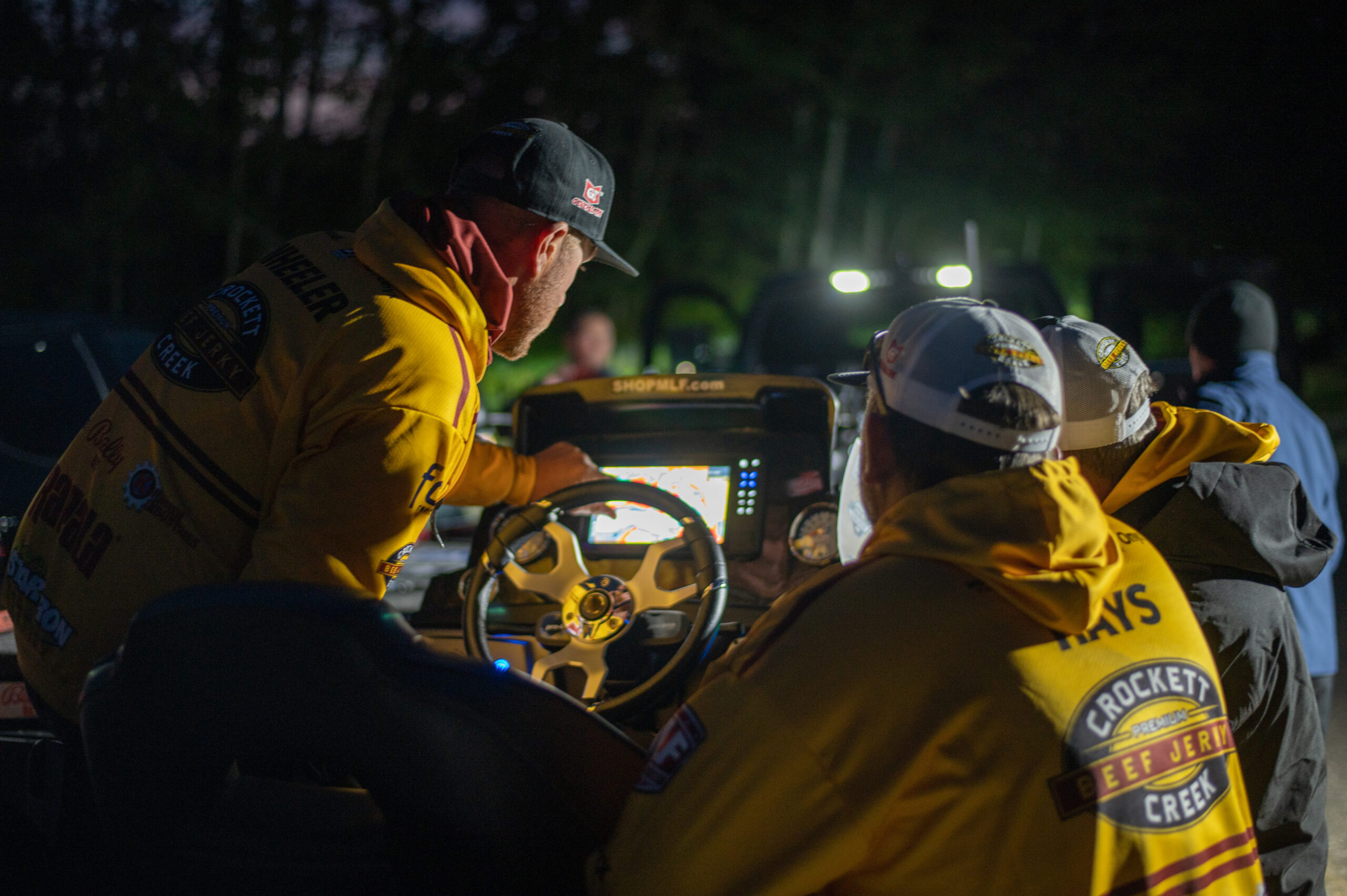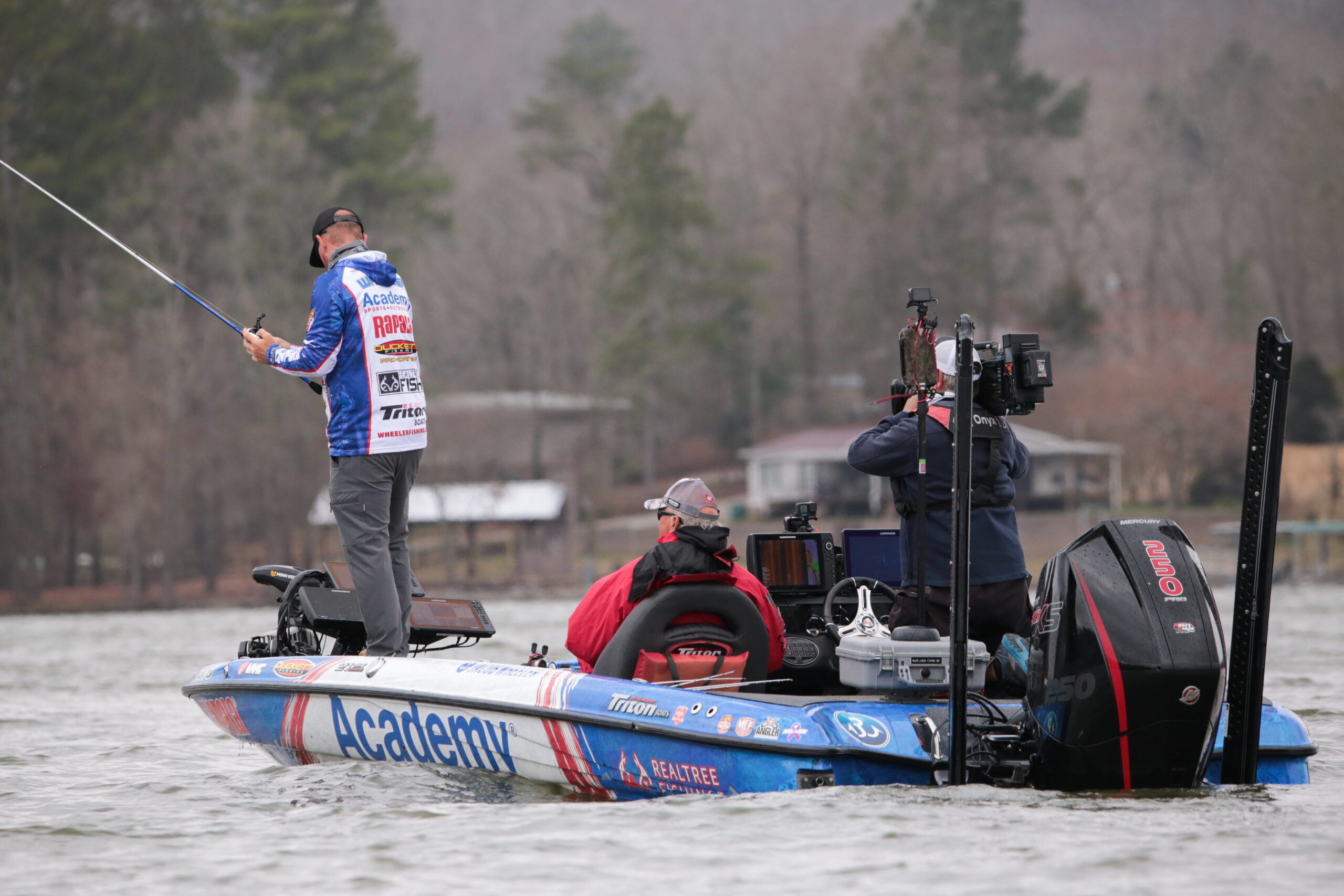JACOB WHEELER: The steam over ‘the beam’
Forward-facing sonar is the talk of the sport, but here’s some REAL talk

The 2023 season has kicked off and, gosh dang, here we go again with the forward-facing sonar turmoil. As pros show off their new 2023 rigs at season-openers, boat shows and in social media with more big screens and transducers than ever before, the “steam over the beam” continues.
Live sonar technology continues to get heat from those who believe it’s unjust or unfair and that, “anyone can now just cast at dots on a screen and catch them at will.”
With that, some misconceptions have come up about the new phase of the sonar game. Hopefully I can shed some light on these misunderstandings and offer some insight on how to use real-time sonar as a learning tool.
Professional tools
First of all, many of these big-screen spreads in bass boats that get so much attention belong to full-time professional bass anglers, like me, who make a living fishing at the highest level of tournament competition. We seek out every possible advantage we can find to be as efficient as possible and live forward beaming is no exception. Many of these pros have been fishing for decades and have graduated up through a vast array of electronics over the years, from flashers, to LCD, to sidescan and downscan, to a 360-view around your boat.
There have been plenty of past tournaments won by “video-gaming” in 2D. These previous uses of sonar were not met with claims of being unfair or unjust. They were just progressions of the competitive fishing world that took years to evolve.
At some point, high-end sonar use by top professionals has become confused with beginning anglers needing this same kind of electronic firepower just to get started bass fishing. Countless bass fishing opportunities are still available to new anglers without having to spend a fortune on electronics. I fished out of borrowed bass boats with just regular depth finders right up until I won the Forrest Wood Cup in 2012.
For those who think $20,000 in professional electronics should be a prerequisite to making a cast for a bass, check out John Cox’s career stats. These machines are not magic bullets, but rather a great option to learn about what’s really happening under the surface.
Also, for some reason, people assume that all those screens are because of forward-facing sonar. Someone will ask, “Why do they have so many screens?” And someone will answer, “Because of forward-facing sonar.”
It does not take three screens up front to make forward-facing sonar work. It takes only one.
The reason why there are so many screens in use is so pros can dedicate entire screens to certain functions like mapping, down scan, 2D and forward-facing sonar. Any single unit can do all of those things at the same time, but you have to constantly switch modes and views and divide the screen’s real estate into smaller pieces. Being able to monitor multiple information sources at one time, in the highest resolution possible, makes sure no stone is left unturned.
9s are fine
Here is a surprising revelation that might help put this into perspective: I can do 90% of all my electronic work in a tournament with just two 9-inch units (one in the console and one in the bow).
In the former MLF Cups and Team Series we all fish out of the same boats. Those boats are rigged with just two units – both Lowrance HDS-9s. The console unit has everything I need for mapping, 2D, down and side scan, and the front unit is also equipped with ActiveTarget forward facing sonar. If you told me I could only have two standard units in my boats, that’s what I would have, two HDS 9’s, with ActiveTarget up front.
Would I like an HDS 12 for more viewing room on ActiveTarget? Sure, but I could make a 9 work just fine. Two HDS-9 units and an ActiveTarget transducer cost about $3,700 – not $20,000.
So if I can do 90% of my electronic work with just two units, then why do I have five on my boat? That’s because the other 10% makes me more efficient.
Dedicating screens to run specific functions and views simultaneously with better resolution to monitor everything without constantly reaching down to swap views is the reason. Yes, three more screens for a 10% gain in efficiency. But if that efficiency leads me to catching one or two more bass by the end of the day, then I’m good with it.

Getting started in real time
For people who have chosen to embark on the journey of this live-beaming technology and want to learn with it quickly, here are a few pointers to get you started.
First of all, learn your distance scales and depths by watching your lure on the screen. You’ll have changeable scales of how far out your live sonar can “see,” but as my friend, pro angler Kyle Welcher, once said, “40 feet is closer than you think, and 100 feet is farther than you think.” Once you start playing with scales, you will see what he means.
How your eyes physically see distance of a cast is much different than where your bait really lands. Training your brain to make the correct distance cast based on what you’re trying to hit on your unit is super critical. Do this by casting to physical objects that you can see above the water with your eyes and below the water on your unit, such as bridge columns, dock pilings or standing timber. Do it over and over again, like practicing freethrows with a basketball, until you can hit the target with the lure. Start with sinking baits that show up well, like jigs, so you can track their fall closely.
Don’t be surprised if your bait misses the target by falling short of the object, especially in deeper water. These are the critical things you see on forward facing sonar that you never knew were happening when blind casting.
After you get better at it, move out to smaller submerged objects like a brush pile or rock. Get good at hitting those isolated objects and understanding your distance and depth.
Next, take lures like crankbaits, jerkbaits and swimbaits and observe them in action. How far do you need to cast a particular crankbait to get it to the bottom? Does it really dive as deep as you thought it did? How deep is that swimbait really getting at the bottom of its arc? How deep is your jerkbait getting? Does your jerkbait really suspend perfectly in a pause? Or, does it rise in the pause? You may discover it actually sinks on the pause. How much sideways glide does your shaky head have? Is your drop-shot spiraling on the fall?
You’ll learn so many things about lures, actions and presentations in a short amount of time. In time you’ll develop confidence in your own selection of lures that dive faster or sink straighter or suspend better for the targets you want to hit. These are all things you can learn in a matter of weeks that make you so much more efficient in your fishing game and it’s all because, for the first time, we can really see what lures are doing in real time.

Putting it all together
When you’re ready to try to catch fish, I would actually recommend starting with crappie. Crappie are a great species to learn on, especially in the winter time because they stay put and require some tinkering with sizes, actions and colors of lures to get them to bite.
If crappie is not your thing, then just get out on the lake and start beaming and observing fish. Watch how they swim and move through the water. Take note of how fast some swim and how poky others are; how some group up and others are isolated. Learn how to follow them with the beam to keep visual contact.
How do they react to your boat and to your lures? This all plays in identifying their species and mood.
In my opinion, highland reservoirs are the best places to learn, mostly because they’re clear, have plenty of depth and a variety of species to observe. Smallmouth fisheries in the North are excellent too, but fair warning – they will spoil you.
Places like Smith Lake, Lake Lanier or Table Rock are excellent live beaming playgrounds that are a truer test of your live beaming skills. When you start trying to cast to dots in motion, you’ll understand why I said learning target pinpointing is so critical. The first time you get a blip to streak toward your bait, flare and eat it on the screen before your line even ticks, it’ll fire you up, I promise. Then after you cast at a couple more hundred fish without another bite, please do me a favor, and tell those who steam about the beam that it’s not as easy as it looks.